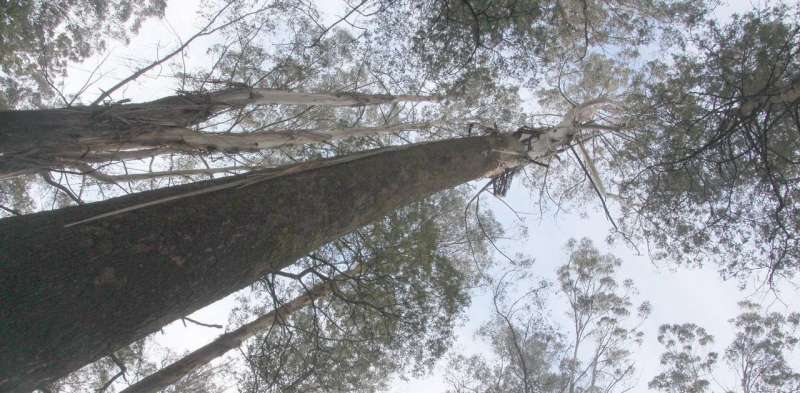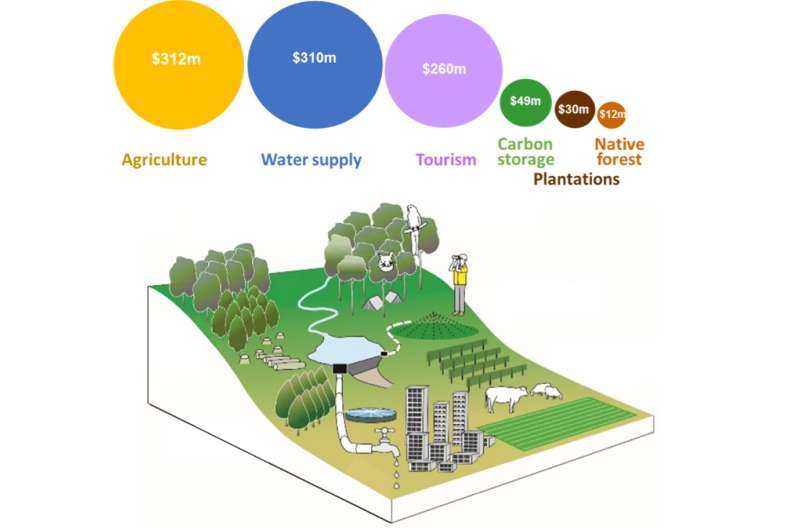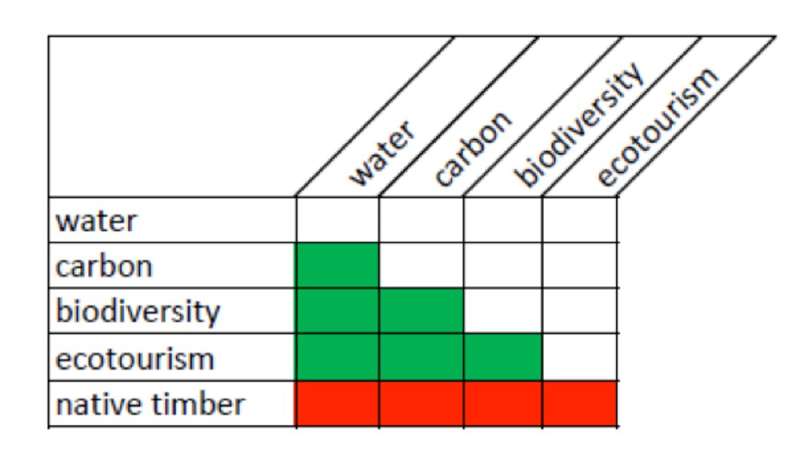Money can't buy me love, but you can put a price on a tree

What is something worth? How do you put a dollar value on something like a river, a forest or a reef? When one report announces that the Great Barrier Reef is worth A$56 billion, and another that it's effectively priceless, what does it mean and can they be reconciled?
This contrast points to fundamentally different notions of value. Environmental accounting is a way of recognising and comparing multiple sources of value, in order to better weigh competing priorities in resource management.
In practice it is sometimes crude, but it's been and its scope is expanding to include .
Using environmental accounting we've the tall, wet forests of Victoria's Central Highlands to weigh the competing economic cases for continuing and creating a . But first we'll explain a little more about environmental accounting, and how we put a price on trees.
What we count
Essentially, environmental accounting involves identifying the contributions of the environment to the economy, summarised as gross domestic product (GDP). In Australia, the Australian Bureau of Statistics standardises the data and reporting of these contributions in the . The Bureau also produces that extend the range of information presented - e.g. water and energy use and greenhouse gas emissions.
But there are other things of value, like positive environmental and social outcomes, worth incorporating into calculations. gives researchers a framework for doing this, extending the accounting to look at the value of different "ecosystem services" – the contributions of ecosystems to our wellbeing - and not just goods and services captured in our national accounts or environmental accounts.
For example, businesses and homes pay a price for water delivery, but the supplier doesn't pay for the water that entered the dam. That water is an ecosystem service created by forests and the atmosphere. By assessing costs in the water supply industry, we can estimate the value of the ecosystem service of water provisioning.

The value of Victoria's Central Highlands
Victoria's Central Highlands are contested ground. Claims and counter-claims abound between the proponents of native timber production and those who are concerned about the impacts of logging on water supply, climate abatement and threatened species.
has, for the first time, directly compared the economic and environmental values of this ecosystem. It shows that creating a Great Forest National Park is clearly better value.
With any change in land management, there will be gains and losses for different people and groups. Assessing these trade-offs is complex, made even more so by patchy and inconsistent data.
Through careful accounting, we synthesised the available data and calculated the to GDP. In 2013-14, the latest year for which all financial data were available, these came to A$310 million for water supply, A$312 million for agriculture, A$260 million for tourism and potentially A$49 million for carbon storage. (There is no current market for carbon stored in native forests in Australia – more on that in a minute.)
All of this far exceeds the A$12 million from native timber production. Although timber production is a traditional industry, its contribution to the regional economy is now comparatively small.
The industries that use ecosystem services are classified as – agriculture, forestry and water supply. This classification is comprehensive (it covers all economic activities) and mutually exclusive (there is no overlap of categories). Downstream uses of the products from agriculture, forestry and water supply are an important consideration for the industries as a whole, but are included in manufacturing industries and not in ecosystem accounts.

Older forests are more valuable
Native timber production involves clearfell harvesting () and slash burning (using ). Regenerating forests are younger, with all trees the same age, and have lower species diversity.
This means these young forests contribute less to biodiversity, carbon storage, water supply and recreation. Therefore harvesting native timber requires a trade-off between these conflicting activities.
But of the native timber harvested in the Central Highlands is used for pulp. This can be substituted by production from plantations that are more efficient and increased use of recycled paper. Both softwood and hardwood plantations can provide .
If we phased out native forest harvesting, increases in the value of water supply and carbon storage would offset the loss of A$12 million per year contributed by the industry. (It would also most likely increase profits for the tourism and plantation timber sectors.)
Older trees use less water than young regrowth, and allowing native forests to age would increase the supply of water to Melbourne's main reservoirs by an estimated 10.5 gigalitres per year. That's worth . Security of water supply for the increasing population of Melbourne is an ever-present concern, particularly with .
Older forests also than younger regrowth forests. The federal government's Emission Reduction Fund does not recognise native forest management as an eligible activity for , but if this changed the forest could earn carbon credits worth A$13 million per year. This would provide an ongoing and low-cost source of carbon abatement, which could be used to meet Australia's emissions reduction targets, while the Victorian government could use the money gained to support an industry transition.
Of course, economic benefit is only one way of looking at land. We know that the Central Highlands is home to unique flora and fauna that cannot be replaced (much of which is ). But careful environmental accounting can help explicitly define the various trade-offs of different activities.
It's particularly important when legacy industries – like native timber harvesting – are no longer environmentally or economically viable. The accounting reveals the current mix of benefits and costs, allowing management of this area to be reconsidered.
Provided by The Conversation
This article was originally published on . Read the .![]()




















